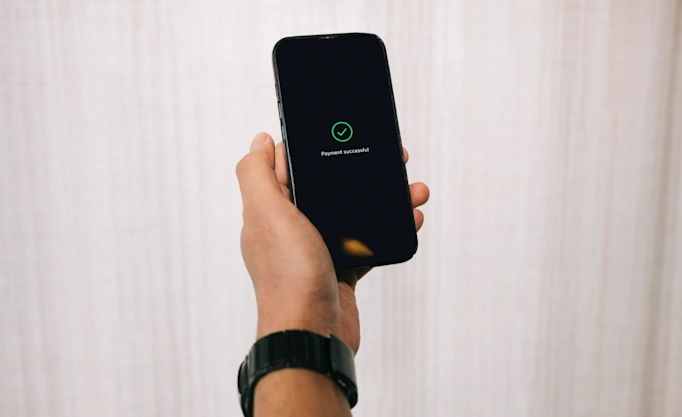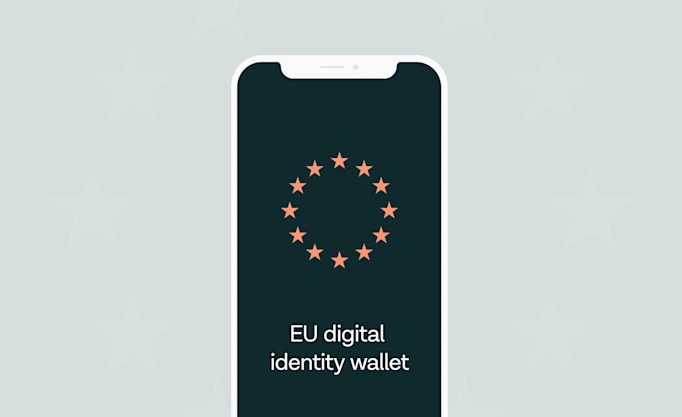3 ways to accelerate Pay by Bank adoption

Speed, security and ease of integration are just some of Pay by Bank’s many benefits. However, for this open banking payment method to really flourish, building trust and reliability is key. We asked financial executives across Europe about the remaining barriers to full-scale adoption. Here’s their take on how to move forward.
Pay by Bank helps merchants improve speed and security while tailoring UX to a higher degree than ever.
Low adoption, limited awareness and poor UX have progressed dramatically thanks to real-time payment schemes, better customer journeys and more.
The future looks bright with increasing consumer Pay by Bank adoption, plus the European Commission’s proposal to mandate instant payment rail adoption.
For our recent report, ‘The future of payments is open’, we surveyed 340 executives about the top three factors in enabling wider Pay by Bank adoption. The results? Increasing instant payment rail adoption, building up user awareness and improving the user experience. Taking each of these in turn, here’s a walkthrough of Pay by Bank’s progress so far and its future prospects.

Challenge one: increasing instant payment rail adoption
Real-time payments are seen as key to the long-term success of Pay by Bank. Why? Real-time rails make it easier for merchants to get an immediate confirmation of payment in the absence of a third party that guarantees payment execution, such as a card scheme. An immediate confirmation isn’t essential for some use cases, like invoice and bill payments, but is crucial in ecommerce to prevent fraud and start order fulfilment. Tink customers using settlement accounts receive this confirmation instantly, prior to the funds being deposited in the merchant’s account.
While the Pay by Bank user experience is faster than that of traditional payment methods – Tink customer flows take less than 45 seconds on average – the underlying payment rails determine how fast the payment settles. In the UK, where the Faster Payments System has seen strong adoption, real-time payments are already a reality. Elsewhere in Europe, however, merchants may need to wait up to one business day for the funds to settle depending on whether the user’s bank supports the SEPA Instant Credit Transfer scheme (SCT Inst).
This could all be about to change, though. In October, the European Commission (EC) published a proposal aiming to mandate banks and payment service providers (PSPs) to provide instant payment services 24/7 at no additional cost to merchants. This is a vital step in clearing the way for full-scale adoption of Pay by Bank across all B2C use cases. You can read Tink’s full take on it here.
Once the proposal is enacted, banks and PSPs will have six months to begin accepting instant payments across the eurozone, pointing to a not too distant future where instant payments across Europe become the norm.
Challenge two: building up user awareness
Our research showed that of the financial executives surveyed, low user awareness of Pay by Bank and open banking generally was one of their top concerns. While it’s true that the general public’s awareness of open banking is low, data suggests that this actually hasn’t been much of a barrier to adoption so far.
Open banking adoption has continued apace, reaching an ever-broader base of consumers. A Tink survey in May found that more than one in ten (12%) of 18–34 year olds in the UK have already used Pay by Bank. An OBIE report from June states that 10–11% of digitally-enabled consumers now use open banking services.
As more consumers are exposed to Pay by Bank, the volume of open banking payments is increasing rapidly. In the six months to March 2022, there were over 21 million payments in the UK with a month-on-month growth of 10%, says the OBIE. Tink now processes over 4 million payments each month across Europe.
Pay by Bank has some inherent advantages when it comes to consumer awareness and trust, too. Tink’s own user research suggests both that the term ‘Pay by Bank’ is instinctively understood by consumers, and that the UX is a familiar experience for anyone used to their banking app. Consumer trust in banks remains high, and Pay by Bank benefits from this too.
Consumers will always prioritise convenience – people aren’t loyal to payment methods, but seek out the method that’s most convenient and secure from those available. Here’s where open banking excels as a method that’s digital and mobile first, with cutting-edge authentication methods. Personalised customer journeys help too – tailored experiences create familiarity. Tink enables merchants to create a fully white-label flow, customised to their brand’s look and feel.
When introducing a new technology or payment method, it’s always a good idea to make your users aware of what’s changing, which you can read about in our conversion optimisation guide. But at Tink, we believe consumers will gravitate towards the payment method that gets the job done fastest and with the least friction, if it’s made available to them.
Challenge three: embracing the changing UX landscape
Following PSD2’s introduction, the patchy quality of banks’ APIs didn’t lend themselves well to seamless user experiences. Users might be redirected multiple times and have to complete two or more strong customer authentication steps unnecessarily. Success rates suffered as a result, and early momentum for open banking became driven by account information services (AIS), not payments.
Fast forward to 2022, and the situation has dramatically improved. In more mature markets like the UK and the Nordics, the user experience for payments is now actually on par with – or better – than traditional payment methods. Other European markets like France and Germany aren’t far behind, and are catching up fast thanks to the development of UX standards.
Pay by Bank also enjoys some inherent UX advantages compared to other payment methods. Crucially, merchants can customise their payments flow to a far greater degree. Tink customers can tailor the look and feel of their flows to their brand, for example. There’s also no need for users to manually enter any payment information, and no risk of a clunky 3D Secure redirect. Taking all this into account, we at Tink fundamentally believe that Pay by Bank has a higher ceiling for conversion rates compared to other payment methods. It all starts with understanding the user and their use case – for inspiration, take a look at this deep dive into UX for Pay by Bank.
All in all, progress is happening as user adoption grows alongside continual UX improvement, particularly in mature markets. As instant payment rail adoption increases and hopefully continues to do so, methods like Pay by Bank enable merchants to serve consumers better with speedy transactions and increased security. Thanks to the growing prevalence of real-time payment schemes and the European Commission’s proposal to mandate instant payment rail adoption, widespread usage is in reach.
If you’d like to see the full report, download your copy below. Or for more overall UX inspiration, take a look at this blog post.
More in Open banking

2025-06-09
11 min read
The case for “Pay by Bank” as a global term
Thomas Gmelch argues that "Pay by Bank" should be adopted as a standard term for open banking-powered account-to-account payments to reduce confusion, build trust, and boost adoption across the industry.
Read more

2025-06-02
3 min read
Tink joins Visa A2A – what it means for Pay by Bank and VRP
Visa A2A brings an enhanced framework to Pay by Bank and variable recurring payments (VRP) in the UK, and Tink is excited to be one of the first members of this new solution.
Read more

2024-11-19
12 min read
From authentication to authorisation: Navigating the changes with eIDAS 2.0
Discover how the eIDAS 2.0 regulation is set to transform digital identity and payment processes across the EU, promising seamless authentication, enhanced security, and a future where forgotten passwords and cumbersome paperwork are a thing of the past.
Read more
Get started with Tink
Contact our team to learn more about what we can help you build – or create an account to get started right away.
